With spring upon us and the warming of the earth, many readers are getting the urge and itch to get outside and start planting a garden. Whether your garden is large enough to feed a community or just big enough to supplement your everyday fresh greens addiction, at some point you will need a supply of potting soil. From container herb gardens to the square-foot garden method, potting soil will need to be on hand. High-quality potting soil is an essential component to a successful garden season because it provides the foundational medium in which your plants will start and continue to grow in. In this article I discuss the process and recipe that I have used for many years for making great potting soil. I hope to provide you with ideas on how to make the best mix for your garden and ways to save money in the future.
The Recipe
The following is an excellent general seed starting mix and transplant mix. For plants that might require a lighter mix, use a 2-1-1 ratio of the following ingredients.
Mix the following ingredients together in a sealable bag or container to maintain moisture if potting mix is to be stored for any length of time.
- 3 parts Peat Moss
- 1 part Compost (can be a combo of compost and worm castings if you have a worm bin available)
- 1 part Perlite
Making the Mix
Step 1) Gather all ingredients in one location to make mixing easy and have everything readily accessible to make additional soil as needed. For small batches, a nice potting bench can come in handy, or for really large batches, you can setup multiple trash cans with a larger screen for sifting the peat.
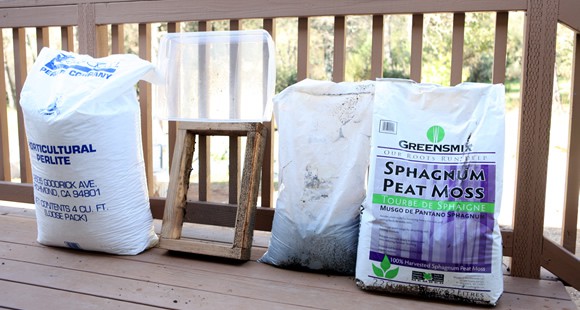
Step 2) Sift the Peat Moss to filter and break up larger solid chunks and sticks. This is important for making a lighter, fluffier mix for seedling starts and seed trays. I use a sifting screen made of 2x4s and hardware cloth to push and rub the peat through to make a consistently fine peat component. Wear a dust mask and gloves during this part.
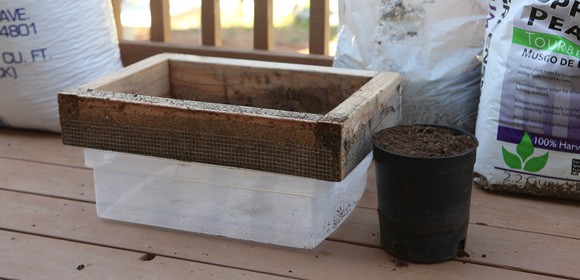
Sifting box made for smaller tubs and containers
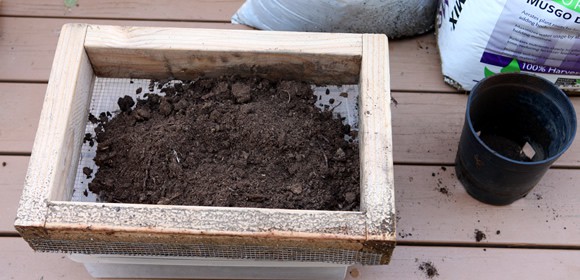
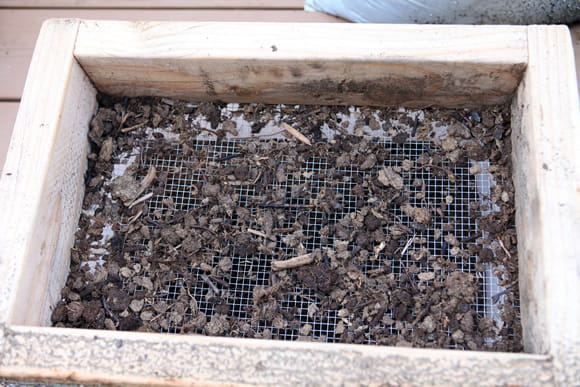
Add the bigger stuff to your compost pile or use it at the bottom of large growing flats as filler.
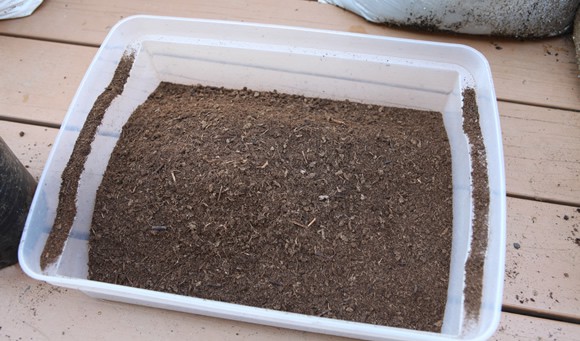
Nicely sifted peat moss.
Step 3) Add the Compost Component - Use a high quality commercial compost if available to help avoid weed seed and to make sure you have good nutritional support for your potted plants. If you are making your own compost, try to use the most seasoned and rich part of your pile. You can also add and use worm castings as a supplement to this part of the mix.
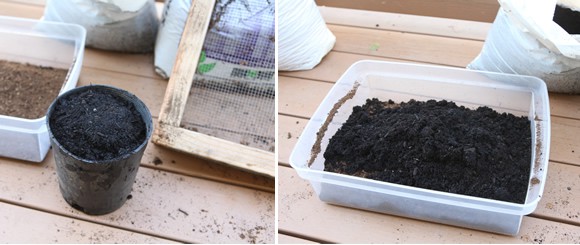
Step 4) Add the 1 part perlite to your mix. Please note that the perlite will flow through a container with holes like these gallon planting pots pictured here and you need to take care not to make a huge mess when doing the transfer from the bag to you mixing container. Also, I try to do this transfer quickly and gently to avoid it blowing around and breathing it in. A dust mask can be a valuable asset to have if you are making a large quantity of potting mix. As noted previously, I wear a dust mask (N95) while sifting the peat moss which can produce a lot of fine dust as well.
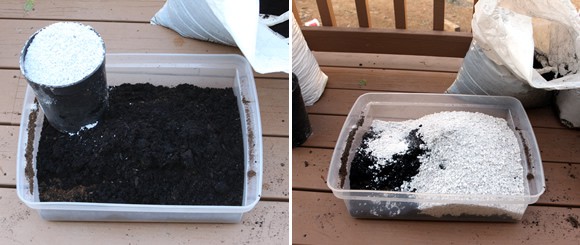
Step 5) Once all the components are combined, mix thoroughly to distribute all the components. For small batches I use my hands to mix the layers. For larger batches I will use a couple of really large tubs or trash cans with lids to mix and slosh around. The final result should look like the wonderful mix pictured below.
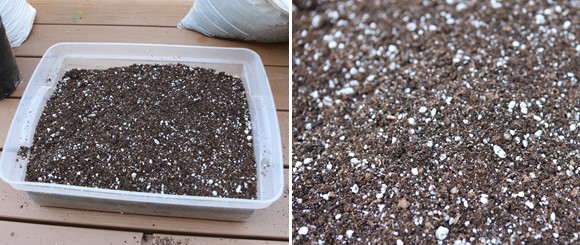
The finished product. Now the hard part - picking which seeds to plant!
Considerations:
Peat Moss vs Coco Coir
On many gardening forums and discussion boards there is always a debate about the pros and cons of different base materials like peat and coir. Much of the debate centers around which resource is more sustainable and a better choice for environmental reasons. I don't yet have definitive beliefs or data to enter this debate. My main goals for making my own potting soil are three fold:
- I know exactly what is in my potting mix.
- It is more cost-effective to make my own than buy bags in the volume that I use. I have reduced my waste stream by purchasing ingredients in bulk.
- I know that this combination of mix gives me excellent, proven results and has produced wonderfully healthy plants every time, reducing my dependency on buying from plant nurseries and local plant sources.
Always keep in mind that we are all trying to support a more sustainable, long-term method of living healthy lives and becoming more resilient. Alternative methods that support that goal are always more desirable. Renewable and sustainable options are always welcome.
Perlite vs. Vermiculite
A few points about the similarities and difference between perlite and vermiculite.
- Both are extremely light, non-toxic, sterile substances.
- Both will help reduce the density of your soil and make it easier for plant roots to grow.
- Vermiculite will aborb and retain water better than perlite. (Need water retention? Use vermiculite. Need better water drainage? Use perlite.)
- In our area, perlite is less expensive and much easier to acquire. We also need the added drainage that perlite provides due to heavy clay content in our soil.
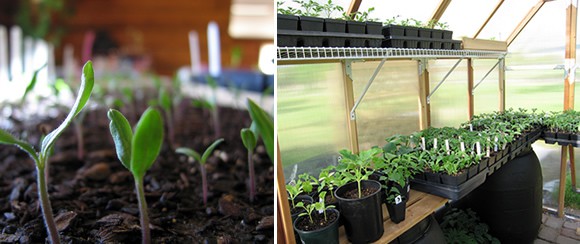
I hope this article gives you some inspiration to get your hands dirty and get that garden going. Having a reliable and effective potting soil mix can really open up the possibility of grow new varieties of plants and trying out unique seed selections. Gardening is always a learning process. Please share your methods and experiences with making soil and let us all have a wonderful growing season.
Cheers,
Jason
This is a companion discussion topic for the original entry at https://peakprosperity.com/making-potting-mix-2/